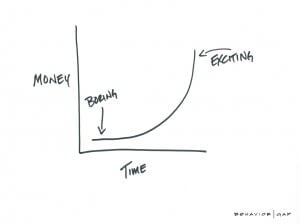
Unintended Consequences
Investment ManagementMar 23, 2023
This year opened on a much higher note than 2022. The stock market was positive for exactly one day in 2022. It was up on the first trading day and then turned down to eventually reach bear market territory. We started 2023 clawing back some of the losses of 2022 and just when complacency began to set in, a banking crisis came onto the scene. While it felt as though Silicon Valley Bank’s fortune turned in a matter of days, the truth is, it had been brewing up for a couple years.
So, what happened? The short answer is poor risk management. It wasn’t the greed that fueled the financial crisis in 2008. During that crisis, the decisions that were made led to excess profits and even more excessive bonuses for the people making the decisions. This time around, the people in charge at SVB decided that they should buy longer dated Treasuries and government agency backed mortgage securities to earn a few more basis points on their deposits. What they didn’t anticipate is a Federal Reserve that would take the most aggressive action it has taken in over 40 years. As interest rates rise, longer dated bonds are impacted the most. Their bonds are worth a lot less now because you can buy the same bonds at significantly higher interest rates.
As long as SVB held the bonds until maturity, they would recoup their initial investment backed by the full faith and credit of the US Treasury. However, if they needed the money before maturity, they would have to sell them at a significant loss in the open market. They were heavily exposed to the tech industry and once a few customers found out about this problem, word spread like wildfire resulting in customer demands to withdraw their money. In a few short days, they were faced with the issue of having to sell these bonds at steep losses. The rest is history. Other bank failures are looming, and Swiss banking giant, Credit Suisse, had to be taken over by competitor, UBS, with direction from the Swiss government.
This is one unintended consequence of the Fed’s aggressive action of the past year. They were willing to accept a drop in the financial markets and a slowing economy. They’ve demonstrated that to us rate hike after rate hike. The problem is that their aggressive action over the past year was a result of another unintended consequence of their zero-interest rate policy of 2020 and 2021: inflation. The sharp increase in money supply in 2020 and 2021, clogged supply chains due to Covid-19 and a war between Russia and the Ukraine created the perfect storm for the worst inflation in over 40 years. Now they are finding that their aggressive action to combat this inflation is brewing up a potential financial crisis. To this point, the market reaction has been much calmer than one might think. While there has been some increased volatility, those that lived through 2008 can attest that the market doesn’t feel like it is a repeat of that time (yet). You can argue that the action by regulators to date has been effective and has happened much quicker than it did in 2008.
The problem with SVB and some other regional banks comes down to liquidity. SVB was not prepared for short term changes in the economy. They were comfortable locking their money in for extended time periods to increase their return on deposits incrementally. They didn’t balance out the short term vs. the long term. In a lot of ways, this is like managing your household balance sheet. While neither a bank or a family can prepare for the Armageddon scenario where they need every dollar on the balance sheet, they can take measures to prepare for liquidity needs in the short, intermediate, and long term. The larger financial institutions kept excess cash on their balance sheets compressing their margins in recent years. However, this has paid off for them because they were prepared for changing financial conditions.
We have written many times that we don’t have much faith in market predictions and certainly aren’t going to make one of our own. We prefer to maintain our discipline of having a plan in place and putting together an asset allocation that is aligned with that plan. Utilizing a bucket approach to balance out the short term and the long-term liquidity provides the flexibility to access capital in the short term without selling a long-term asset at an inopportune time. SVB perfectly illustrates the consequences of the alternative.


